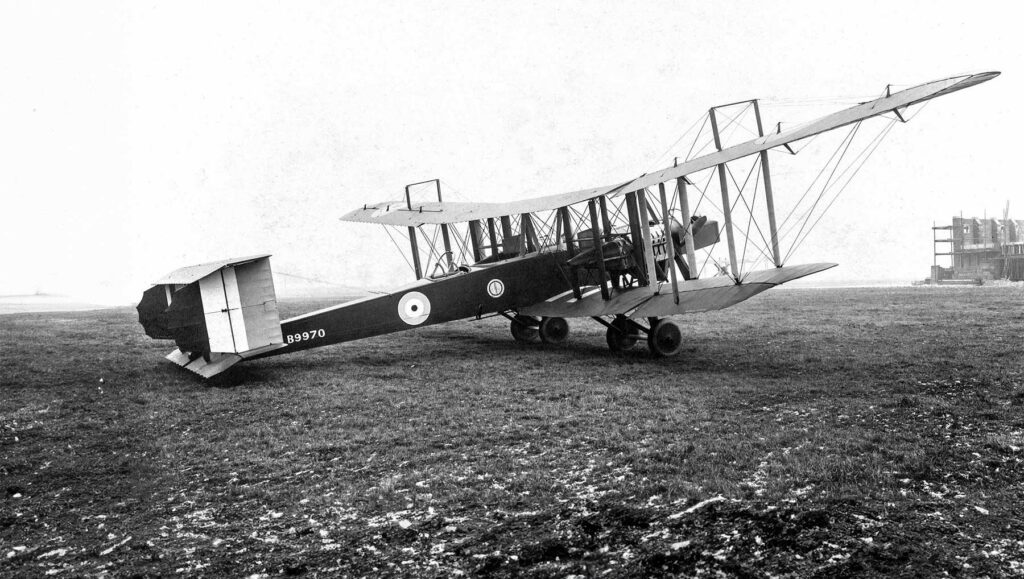British WWI-era biplane, the Blackburn Kangaroo was a patrol bomber with a notable twin-engine design for maritime operations. The article explores the Blackburn Kangaroo, a World War I-era patrol bomber designed by Blackburn Aircraft. It discusses the aircraft’s development, influenced by wartime needs, and details its unique design characteristics, including its twin-engine configuration. The performance metrics are compared with its contemporaries, and the aircraft’s military service is examined, alongside its operational history and the reasons for its eventual obsolescence.
The Blackburn Kangaroo represents an early foray into the twin-engine bomber category, primarily serving as a maritime patrol aircraft. Developed during a time when aviation was rapidly evolving, it showcased significant advancements from the single-engine models that preceded it.
History of the Development of the Blackburn Kangaroo
During World War I, the need for effective long-range maritime patrol aircraft became paramount. The British naval forces sought an aircraft capable of enduring long flights over the North Sea and Atlantic, detecting enemy submarines, and engaging naval targets.
Blackburn Aircraft, a pioneer in British aviation, responded to this call. The Kangaroo was developed to serve as a patrol bomber, capable of carrying a substantial payload over considerable distances for maritime reconnaissance and anti-submarine warfare.
The program was launched amid the backdrop of a global conflict where control of the seas was as crucial as the land battles raging across Europe. The first Blackburn Kangaroo took flight on 31st January 1918, at a time when aircraft design was evolving rapidly due to the pressures of war.
Design of the Blackburn Kangaroo
The Blackburn Kangaroo was a large biplane with a fabric-covered wooden frame. Its design was distinctive, featuring two Rolls-Royce Falcon III engines, each producing 275 horsepower. The engines were mounted on the lower wing, driving tractor propellers.
The aircraft had a length of 42 feet 8 inches (13 meters) and a wingspan of 68 feet 6 inches (20.88 meters). Its twin-engine design was both an advantage and a drawback; while it provided redundancy and improved lift, it also made the aircraft more complex and expensive to produce and maintain.
The Kangaroo could accommodate a crew of four: a pilot, co-pilot/navigator, and two gunners. It was equipped with dual controls, which was relatively uncommon at the time, and it featured a fully enclosed cabin for the crew, offering protection from the elements.

Performance of the Blackburn Kangaroo
With its twin Rolls-Royce engines, the Kangaroo had a top speed of 95.5 miles per hour (153.7 kilometers per hour), a service ceiling of 15,000 feet (4,572 meters), and a range of 500 miles (805 kilometers). While not the fastest aircraft of its time, these performance characteristics were suitable for the patrol bomber role.
Compared to single-engine bombers like the Sopwith 1½ Strutter, the Kangaroo’s twin-engine setup offered better performance, particularly in terms of range and payload capacity, which was crucial for maritime patrols.
Military Use and Combat of the Blackburn Kangaroo
The Kangaroo’s armament typically consisted of two .303 Lewis guns mounted in the nose and rear positions. It had the capability to carry up to 460 pounds (209 kilograms) of bombs.
Though it entered service late in World War I, the Kangaroo saw limited combat. Its main role was in maritime patrol and anti-submarine duties. It was not widely exported or used by other countries, and its service was relatively short-lived.
With the end of World War I and the rapid pace of aviation technology, the Blackburn Kangaroo was soon outclassed by newer, more capable aircraft. It was eventually replaced by more modern designs such as the Fairey III and the Avro Anson.
The Blackburn Kangaroo holds a modest but important place in aviation history. As one of the early twin-engine patrol bombers, it contributed to the evolution of maritime patrol aviation, though it was quickly superseded by the technological advancements that followed. Its development and service encapsulate a transformative period in military aviation, bridging the gap between the rudimentary aircraft of early World War I and the more advanced models that would dominate the skies in later years.
Back to the Bombers section.